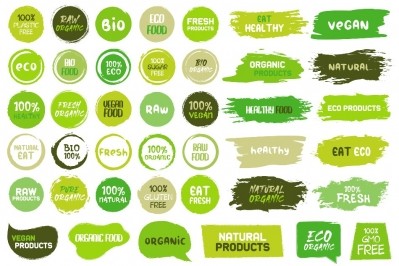Special Edition: Natural & Clean label confectionery
What it means to eat ‘clean’

While the idea of ‘clean label’ was first used to describe product labels with simple, understandable ingredients, today it is a broad concept which means different things to different consumers. These personal definitions of what it means to eat ‘clean’ are influenced by a range of external factors - not all of which are conclusive or straightforward.
Our proprietary research shows that clean labels and natural origins are a trend that’s here to stay. Even in indulgent food categories such as confectionery, our research finds four in 10 European consumers say they are likely to check ingredient lists when purchasing new products.
Consumers, especially younger shoppers, increasingly want to know what’s in the food they eat, where it was made and who made it. Especially in the confectionary segment we now see consumers’ purchasing decision being influenced in the first place by whether the product was made with natural ingredients followed by product safety, premium quality, and reduced sugar offerings (Source: Innova Market Insight 2023). For these discerning shoppers, food should taste good, be good for them and good for the planet, too.
A considerable number of consumers say they avoid artificial ingredients, GMOs, processed foods, and unfamiliar ingredients and want fewer ingredients on the label with half of consumers who check package labels say nutritional information is important when selecting sweets and candy (Source: IngredienTracker 2022).
Food developers should know that 'clean is undeniably emerging as the new starting point for product innovation. Yet, producing label-friendly products today entails navigating through multiple layers of intricacy – from developing traceable supply chains to tackling the hurdles of reformulating products with ingredients that meet label-friendly criteria.
Using the right ingredient
In recent years, consumers have increasingly sought solace and occasional upliftment from indulgent food and beverage choices. This has been especially true in the confectionery category.
But at the same time many people are conscious of their health and are seeking options that support healthier nutrition. This extends to the confection space as more and more consumers seek traditionally indulgent food & beverages with a healthier spin. Six in 10 (63%) global consumers classify themselves as taking a proactive approach to health and wanting to improve wellness even if in good health (Source: TrendTracker 2023).
When it comes to sugar and sugary treats, consumer attitudes are complex, so it’s important to understand the thinking and how it informs this evolving category. For example, consumers continue to link sugars with key concerns about health and wellness, according to data from The Hartman Group. The same source finds 46% of consumers say they are avoiding artificial sweeteners.
The good news for brands and product formulators is that label-friendly ingredient solutions have become more effective in the last few years, addressing consumers’ demands for clean label and nature derived ingredients while still delivering on the key product functionality issues of taste, texture, shelf life and cost.
Nowadays many new techniques are used in non-chocolate confections, where brands are innovating with lower-sugar versions of chews, twists and gummies that boast claims like gluten-free, vegan, and inclusion of organic ingredients.
One of the game-changing ingredients making these products possible is pectin, which has a lot going for it from both a functional and perceptual perspective. Pectin is an ingredient that occurs naturally in fruits like apples, pears, berries, and citrus, and is typically extracted from apple pomace and citrus peel. It has long been used to make homemade jellies and jams, which gives it a familiar and label-friendly perception. In the confection category, pectin has become a plant-based replacement for animal-based ingredients like gelatin, which serves as a gelling or thickening agent.
In response, Cargill’s pectin portfolio is in constant evolution, as we develop solutions that help meet evolving customers’ needs. Our UniPECTINE solutions for confectionery provide great texture and flavour release, especially in jellies & gummies. HM pectin can be used in high sugar acid jellies (coated or not) and offers excellent firmness and flavour release, and a smooth and brittle texture. LM pectin of the PG series can be used in non acidic conditions and provides a tender texture. Pectin delivers a firm first bite, and hence a new eating experience that can surprise the consumer palate. Additionally, it can help to improve shelf-life quality of end products and can be used for certain vegan/vegetarian formulations.
We first pioneered commercial-scale pectin production in 1948 and now in a noteworthy stride toward revolutionizing the realm of label-friendly pectins, Cargill recently unveiled a new range of LM conventional (LMC) pectins. Developed using proprietary technology, they can deliver novel texture and are applicable in products marketed with 'organic' claim. One of the standout offerings within this range is UniPECTINE LMCPlus, designed to cater specifically to the needs of low-sugar and high-fruit-content jams, as well as bakery fruit fillings.
The future of 'clean'
It is clearly an exciting time for the confectionery space, with opportunities to create new treats that help meet changing consumer demands and balance the desire for indulgence with nutritious, great-tasting products.
But with this expanding interest comes additional label-claim scrutiny. Looking ahead, this means communication about label-friendly properties will be critical. According to findings from Innova Market Insights, attributes that have long been associated with label-friendly, such as zero additives and minimal processing, will still be important, but the definition of 'clean label' is expanding beyond the product itself to ethical and environmental attributes around its production.
It will be important to communicate these ideas in ways that are both meaningful and verifiable, including use of certifications and demonstrable concepts like use of recyclable packaging materials. As consumers become more astute about shopping and buying online their ability to research and choose label-friendly products will grow, so they’ll be looking for deep information and strong storytelling about a product’s label-friendly attributes.
- Markus Gaertner is R&D Sugar Confectionery and Fruit Category Leader Europe, Cargill





